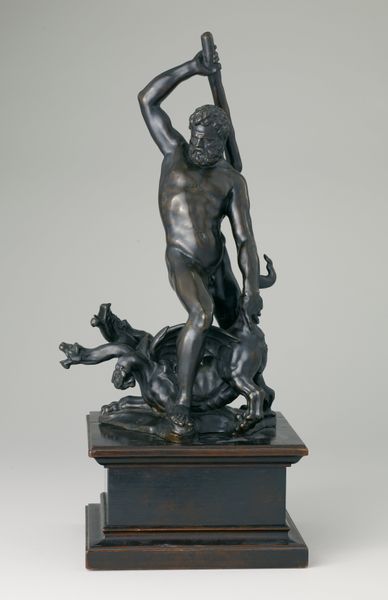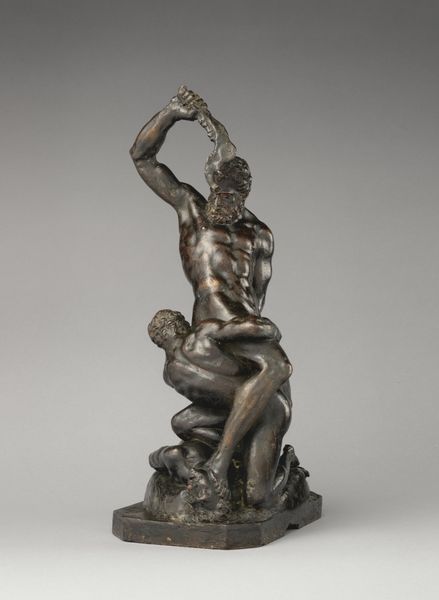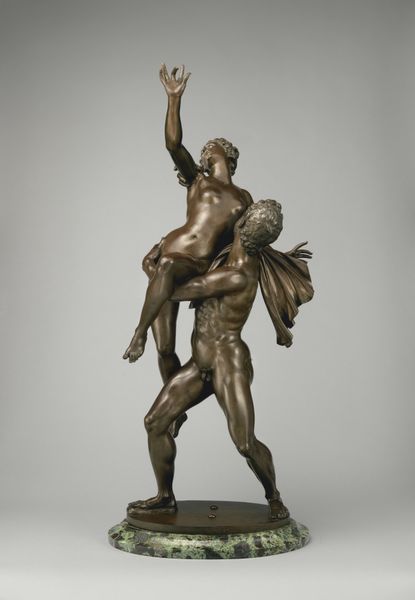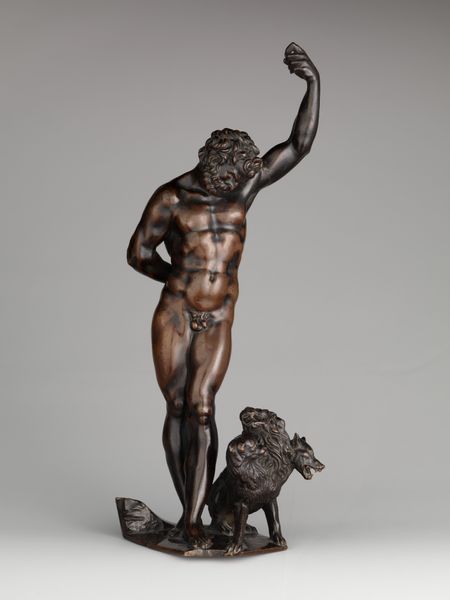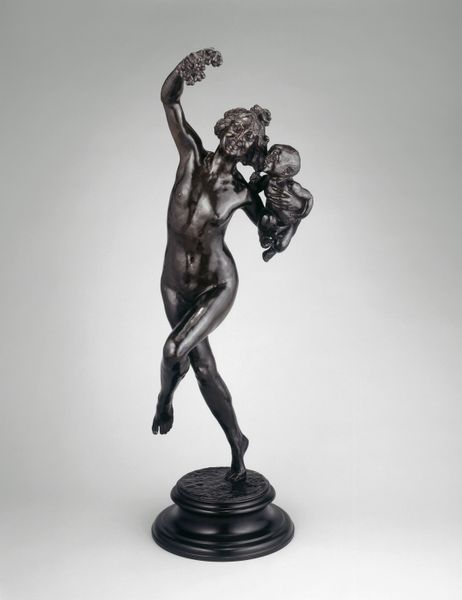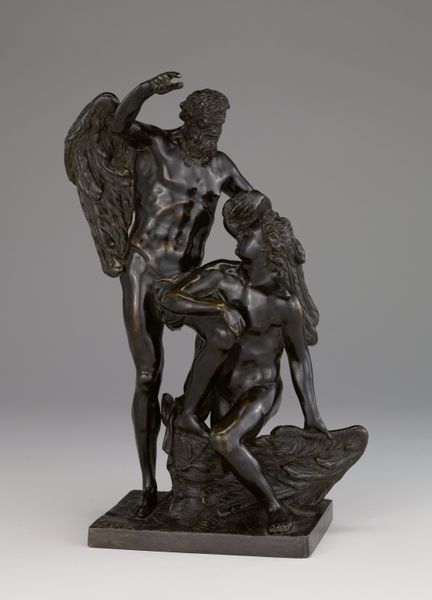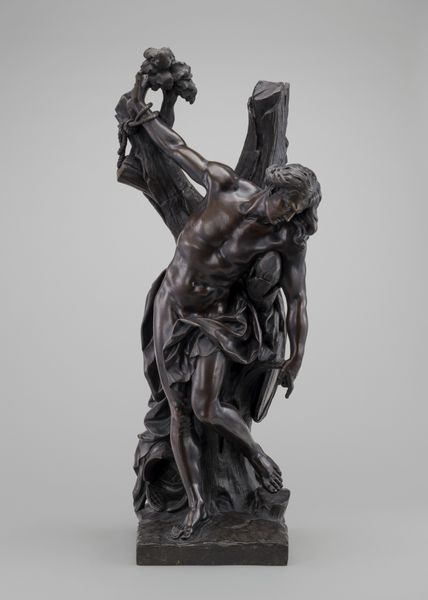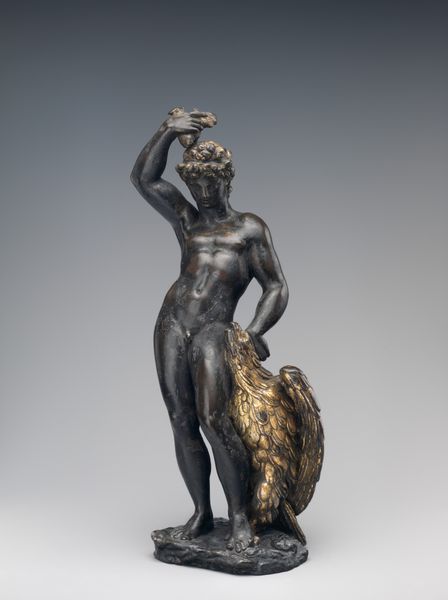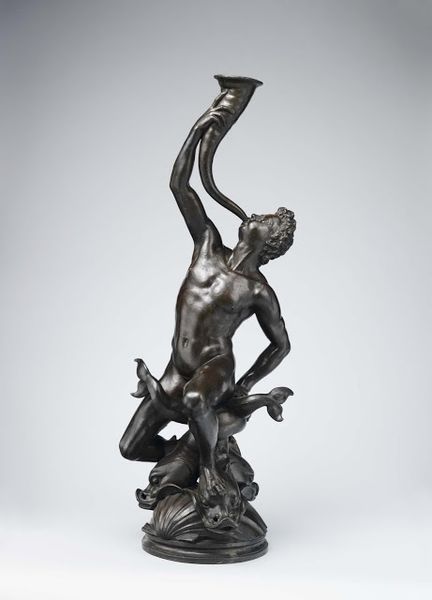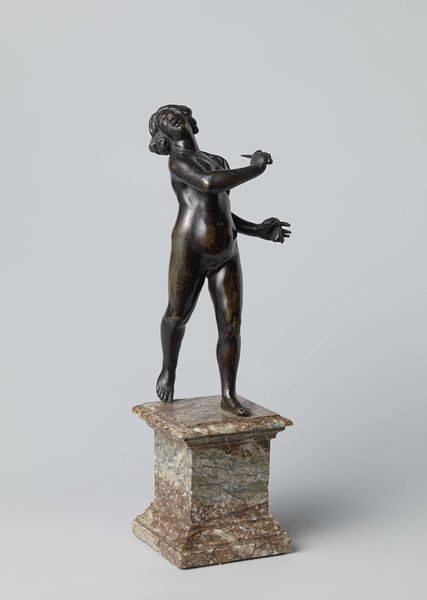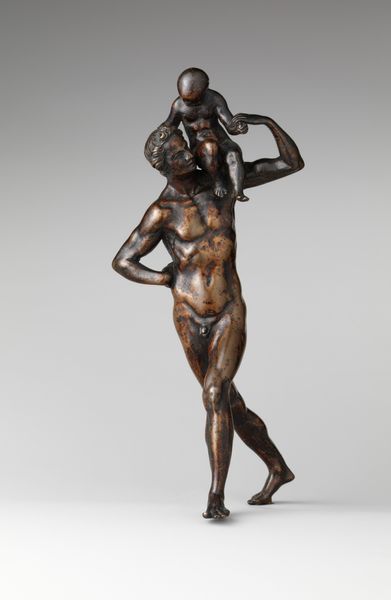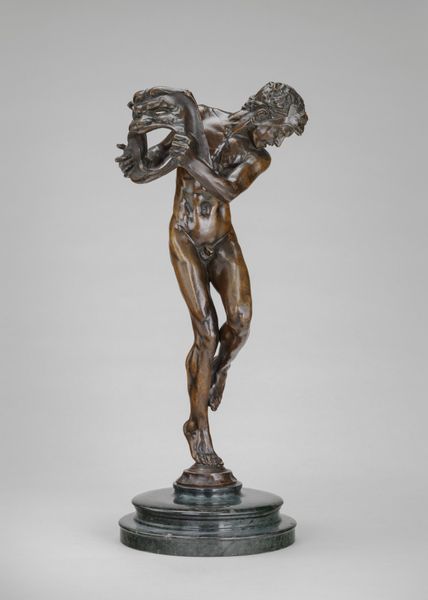
bronze, sculpture
#
statue
#
allegory
#
sculpture
#
bronze
#
mannerism
#
figuration
#
sculpture
#
history-painting
#
statue
Dimensions: overall: 77.3 x 34.8 x 31.8 cm (30 7/16 x 13 11/16 x 12 1/2 in.)
Copyright: National Gallery of Art: CC0 1.0
Adriaen de Vries made this bronze sculpture, "Empire Triumphant over Avarice," sometime in the late 16th or early 17th century. De Vries was a master of bronze casting, a complex process involving creating a wax model, encasing it in clay, melting out the wax, and then pouring in molten bronze. The sculpture’s material profoundly influences its appearance. Bronze, with its inherent strength, allows for dynamic, twisting forms. The dark, lustrous surface accentuates the muscular tension and emotional intensity of the figures. De Vries skillfully used the lost-wax casting method, which permitted him to create intricate details and a sense of movement in the figures. This wasn't just a technical feat; it was a social statement. Bronze sculptures like this were luxury items, symbols of wealth and power. The subject matter, with Empire triumphing over Avarice, reflects the values of the ruling elite. By understanding the materials, the making, and the historical context, we can fully appreciate the artistry and significance of this sculpture, challenging any distinction between craft and fine art.
Comments
No comments
Be the first to comment and join the conversation on the ultimate creative platform.
